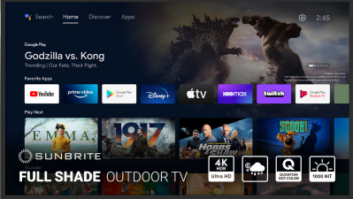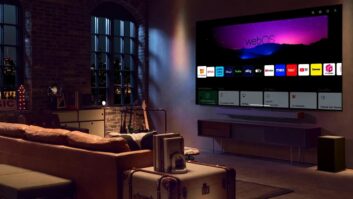Arlington, Va. — The more exposure U.S. consumers have to 3-D TV, the more interested they become in obtaining 3-D TV options, according to a newly produced joint consumer study conducted by the Consumer Electronics Association (CEA) and the Entertainment and Technology Center at the University of Southern California.
The study, which is titled “3-D TV: Where Are We Now and Where Are Consumers,” predicts that 3-D technology is now positioned “to become a major force in future in-home entertainment,” the CEA said.
Findings were compiled through a national telephone survey of 1,002 U.S. adults conducted Dec. 18-23, 2008.
According to the study, nearly 41 million U.S. adults reported having seen a 3-D movie in theaters in the last 12 months. Of those, nearly 40 percent said they would prefer to watch a movie in 3-D than that same movie in 2-D. That’s compared to just 23 percent who have not seen a 3-D movie in the last year.
“When it comes to current 3-D technology, seeing truly is believing,” stated Shawn DuBravac, CEA’s economist and research director. “Today’s 3-D offerings are changing the way consumers view video content, not unlike the early days of high-definition television, which redefined TV as we know it today.”
Sixteen percent of consumers are interested in watching 3-D movies or television shows in their home, while 14 percent are interested in playing 3-D video games, according to the report, meaning approximately 26 million households have some interest in having a 3-D content experience at home.
According to the report, more than half of U.S. adults said having to wear special glasses or hold their heads still while watching a 3-D TV would have no impact on them purchasing a 3-D set for their home.
Another driving factor for the capability is content availability, the study showed. Nearly 30 percent of U.S. adults said having access to 3-D content though cable, satellite, fiber optics or over-the-air broadcasts influence their decision to buy a 3-D capable TV.
“Movie studios and broadcasters are experimenting with 3-D and continue to search for ways to bring the technology into consumers’ living rooms,” stated David Wertheimer, Entertainment and Technology Center CEO and executive director. “In the past few weeks alone, we’ve seen college football’s national championship game, multiple Super Bowl commercials and an hour-long TV show, all broadcast in 3-D. Interest in 3-D is growing, and consumers and content providers are both interested in seeing 3-D migrate into the home.”
The study also found that consumers were willing to pay more for a 3-D experience. Nearly half indicated they were willing to spend more for a television capable of displaying 3-D content. In fact, 15 percent of consumers said they would spend roughly 25 percent for such a TV. The parallels between 3-D and other successful technologies like HDTV suggest great potential for 3-D in the home, the groups said.
Copies of the report are available for free to CEA members through CEA. A $999 fee will be charged to non-members.
Shawn DuBravac and David Wertheimer will discuss 3-D technology in further detail in an exclusive webcast February 24 at noon. Those interested can register for the event by contacting Steve Kidera at [email protected] .













